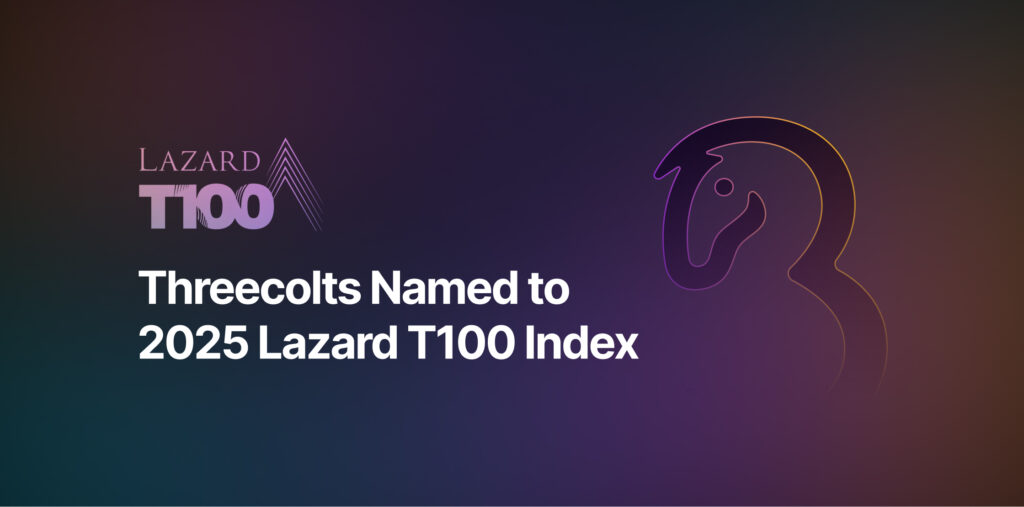- Blog
-
For Sellers
How to source clearance items to resell on Amazon in 2025
The clearance section most shoppers ignore is quietly making more and more Amazon resellers richer.

Clearance sales offer Amazon sellers a golden opportunity to score brand-new products at 50 to 90% off the retail price. This pricing gap creates the perfect arbitrage scenario. You can buy low locally, sell high on Amazon, and pocket the difference.
Thus, it’s no wonder that clearance arbitrage remains one of the most accessible entry points into Amazon selling. It requires minimal startup capital, provides fast inventory turnover, and helps you learn the Amazon ecosystem quickly.
Let’s dive into how you can build a systematic approach to finding, evaluating, and profiting from clearance opportunities year-round.
Don’t feel like reading? Listen to this article in our podcast, Commerce Decoded.
Why resell clearance items?
Clearance arbitrage delivers some of the highest ROI potential in the Amazon seller ecosystem. Imagine, when you buy an item at 70% off retail ($15 instead of $50), you can price it at $40 on Amazon, pay approximately $10 in fees, and walk away with $15 profit on a $15 investment. A clean 100% ROI.
But beyond the impressive margins, clearance arbitrage offers more advantages:
- Lower competition: Clearance items are usually limited in quantity and location-specific. This means fewer sellers have access to the exact same inventory. This gives you pricing power.
- Low startup risk: You can begin with just a few hundred dollars. You can test product categories and build your sourcing skills without a major financial investment.
- Speed to market: Items can be found, prepped, and listed within days. This rapid inventory turnover creates a healthy cash flow cycle, especially important for new sellers.
- Diversification: Clearance sourcing gives you access to a range of products across categories like toys, home goods, apparel, and electronics. This diversity protects you from category-specific downturns.
Where to find profitable clearance items year-round
Successful clearance arbitrage requires being systematic when it comes to where you’re sourcing. While there are seasonal sales that are somewhat predictable, you have to be able to find profitable clearance deals in any month. Here are some tips.
Walmart clearance strategies
Walmart’s clearance system offers some of the richest opportunities for arbitrage sellers, especially if you understand their markdown patterns.
Walmart frequently uses “hidden clearance,” where items ring up for less than the price shown on the shelf tag. This happens when centralized price drops haven’t been updated on local tags.
Always use the Walmart app to scan barcodes and check current prices. An item with a yellow $15 clearance sticker might actually ring up for $5 or less at checkout.
Look for items with yellow clearance stickers, but don’t limit yourself to the dedicated clearance sections. Clearance items can be scattered throughout departments, especially end caps and back walls.
Target clearance strategies
Target follows a fairly consistent markdown pattern: items start at 30% off, then move to 50%, 70%, and sometimes 90% off over several weeks.
Target also uses a unique pricing code system. Check the upper right corner of clearance tags for a small number that indicates the discount percentage (e.g., “30” means 30% off).
Another hack is to use the Target app to price-check items in-store. If an item shows a lower “clearance” price in the app but still has a regular price tag in-store, you can usually get the clearance price at checkout.
Lastly, follow the seasonal rhythm of retail. Back-to-school items hit clearance in late September, summer items in August, and winter items in February.
Other retailer clearance patterns
Beyond the big box stores, several other retailers offer predictable clearance opportunities worth exploring.
TJ Maxx/Marshalls/HomeGoods
These related stores use a tag color system to indicate clearance status. White tags show regular prices, while red tags indicate the first markdown. When you see yellow tags, that’s the final clearance price. Typically, the best deals.
Clearance items are both in dedicated clearance sections and mixed throughout regular merchandise. Always check back corners and endcaps for the highest concentration of marked-down products. The best sections for arbitrage are usually home goods, toys, and brand-name kitchenware.
ROSS
ROSS uses small pink “REDUCED” stickers placed on top of original price tags. When you see multiple stickers stacked on one tag, that item has been marked down several times and is likely at its lowest price.
ROSS excels in brand-name closeouts in apparel, shoes, toys, and home goods. Their irregular inventory patterns mean each visit can yield completely different finds.
Specialty and regional stores
Don’t overlook smaller retailers and regional department stores. These often have less competition from other resellers and can provide unique inventory opportunities.
Online liquidation platforms like B-Stock provide access to bulk clearance lots directly from major retailers. These work best for experienced sellers ready to scale up their clearance operations.
Outlet malls, especially those with brand-name stores, frequently run end-of-season clearance events where high-quality merchandise can be found at 70-80% off retail.
Seller apps that make clearance sourcing easier
The key to profitable clearance arbitrage is quickly evaluating items in-store. This is where Seller 365 and its scanning tools give you a decisive edge.
ScoutIQ is the best choice for book flippers or those focusing on reselling media items. Simply scan a product barcode and instantly see:
- Current Amazon selling price
- Sales rank and demand metrics
- FBA fees and profitability calculations
- The proprietary eScore, which tracks a book’s sales history
Scoutify takes scanning efficiency even further. Beyond standard pricing data, Scoutify shows:
- Profit calculations based on your purchase price
- Sales velocity to help gauge how quickly items will sell
- Restriction alerts to prevent purchasing ungated brands
- Buy list creation that connects directly to InventoryLab (another Seller 365 app!) for seamless listing
Using these tools, you can scan hundreds of clearance items in a single sourcing trip, quickly identifying the 10-20% of products that offer genuine profit potential.
Advanced clearance sourcing techniques
Beyond knowing where and when to shop, there are several more advanced strategies to maximize the results you’re gonna get.
1. Build a relationship with store associates
Regular, respectful interactions with store employees can yield insider information about upcoming markdowns. Retail workers often know when clearance scans are scheduled days in advance.
Store managers and department leads also have discretion in further discounting clearance items that haven’t sold. A good relationship might mean an extra 10-20% off already discounted merchandise.
Never argue about prices or leave messes while scanning. The fastest way to lose clearance opportunities is earning a reputation as a difficult reseller.
2. Have a system for storing seasonal items
Long-term storage strategy matters when buying seasonal clearance for future resale. Climate-controlled storage prevents damage to items that might sit for months before peak selling season returns.
Label clearance inventory clearly with purchase date, source, cost, and target sale period. This prevents forgotten inventory and helps track long-term ROI on seasonal holds.
Set calendar reminders to prep and list seasonal items 30-45 days before their peak demand period. Easter items bought on clearance should be listed by early February the following year.
3. Shipping and storage considerations
Factor storage costs into your clearance ROI calculations. A 90% discount isn’t as profitable if you need to pay for storage space for 9-10 months.
Bulky seasonal items like holiday decorations and lawn furniture offer huge markdowns but require significant storage space. Focus on smaller items if your storage is limited.
Some seasonal items can be “cross-purposed” to sell in multiple seasons. Christmas lights can be marketed as wedding or patio décor year-round, reducing the seasonal storage burden.
Some clearance sourcing mistakes to avoid
Even experienced sellers make costly clearance sourcing mistakes. Knowing the common pitfalls will help protect your profits.
Here are just some common pitfalls in clearance arbitrage:
- Buying solely based on discount percentage rather than actual profit potential. A 90% discount on a product with no demand is still a losing investment.
- Neglecting to check if you’re approved to sell certain brands or categories on Amazon. Many clearance bargains in beauty, toys, and electronics might be restricted to new sellers.
- Underestimating storage costs and the time value of money when holding seasonal items for future resale. Long-term storage fees can quickly erode your margins.
Instead, always calculate your all-in ROI. Include the purchase price, shipping to Amazon, FBA fees, and potential storage fees if the item might sell slowly.
Check competitive pricing using Scoutify or the Amazon Seller app before purchasing. If dozens of sellers already offer the item at prices near your potential buy cost, profitability will be limited.
Plus, examine sales rank history, not just current rank. A toy might show strong sales rank during December but sell slowly the rest of the year.
Here’s when to pass on “great deals”
- Items with obvious damage to packaging, even at 90% off, often lead to customer returns and negative feedback on Amazon.
- Products in oversaturated categories with dozens of competing sellers. Regardless of the discount, you’ll almost certainly face race-to-the-bottom pricing.
- Seasonal items when you’re already approaching their peak selling season. Buying Christmas decorations at 50% off in early December leaves little margin for profit.
- Items with high return rates present a higher risk, even at steep discounts.
How to scale your clearance arbitrage business
Once you’ve mastered the basics of clearance arbitrage, these strategies will help you grow from occasional finds to consistent, scalable profits.
Expand your sourcing radius efficiently
Plan efficient sourcing routes that hit multiple retailers in a geographic sequence to minimize drive time. Consider overnight sourcing trips to larger cities within a few hours’ drive. After all, a well-planned 2-day sourcing trip can yield more inventory than weeks of local searching.
Alternatively, you can partner with family members or trusted friends to divide and conquer. Two people can scan different sections of a store to double your sourcing capacity.
Train helpers to identify profitable clearance
As mentioned above, you don’t need to do everything on your own. But when you do, make sure to create simple scanning guidelines for helpers or employees with clear buy parameters. Think: minimum ROI, acceptable sales rank ranges, and approved categories.
Start new helpers in straightforward departments like toys or home goods before moving to more complex categories like electronics or apparel.
Schedule regular review sessions to analyze what’s selling well and refine sourcing criteria based on real results.
Use an inventory tracking system for clearance finds
Document every clearance purchase with source, date, purchase price, and expected selling season. This data will become important for planning future sourcing.
Track sell-through rates on seasonal items to refine purchasing strategy. If Christmas decorations purchased in January don’t sell well the following November, adjust your buying parameters.
Use inventory aging reports to identify slow-moving stock and create promotions or bundles to accelerate sales before long-term storage fees apply.
Use Seller 365 for other parts of the operations
Beyond scanning tools, Seller 365 can also help in every other aspect of your clearance reselling business:
- InventoryLab connects directly with your Scoutify finds. This allows you to create listings, print labels, and manage shipments in one seamless workflow. This eliminates double data entry and reduces prep time.
- SmartRepricer automatically adjusts your item prices based on competition, inventory age, and sales velocity. This ensures you gain the most profit on fast-selling items while gradually lowering prices on slower inventory.
- FeedbackWhiz Emails automates review requests, helping maintain a strong seller reputation. This is especially important when selling clearance items that might have been sitting in your inventory for months.
- FeedbackWhiz Alerts monitors your listings for hijackers and unauthorized changes. This protection is crucial when selling brand-name clearance items that might attract counterfeiters.
- InventoryLab Accounting tracks your purchases, expenses, and profits with tax-ready reports. The direct integration with Scoutify and InventoryLab means your purchase costs are automatically recorded during sourcing.
- FeedbackWhiz Profits provides SKU-level profitability tracking across both Amazon and Walmart. This will help you identify which clearance categories and seasons deliver the best returns.
Master clearance arbitrage and reap the benefits
Finding that 90% off sticker feels amazing, but turning it into actual profit takes more than luck.
The math already works beautifully when you nail the process: buy dirt cheap, sell for solid margins, repeat with confidence. But with the right tools and strategy, you can build an even more sustainable business.
Seller 365 provides the complete toolkit you need to excel. From in-store scanning with ScoutIQ and Scoutify to seamless listing with InventoryLab and automated repricing with SmartRepricer, every step of your workflow is covered in one subscription. And it only costs $69/month.
Remember: clearance arbitrage rewards the prepared and punishes the disorganized. Get the tools that stack the odds firmly in your favor.
Give Seller 365 a spin for free for up to 14 days. Get started with a free trial now.
FAQs about selling clearance items
Yes, reselling clearance items is completely legal under the first-sale doctrine. Once you purchase an item legitimately, you own it and can resell it, even if it’s marked “not for resale.” Major retailers sometimes discourage reselling through quantity limits, but they cannot legally prevent you from reselling items you’ve purchased.
Amazon explicitly allows the resale of new, authentic products purchased from retail stores. Their own seller guidelines acknowledge retail arbitrage as a common and acceptable sourcing method.
The key restriction is product condition. Items sold as “New” must be exactly that: unopened, unused, and in original packaging. Clearance items with damaged packaging should be listed as “Used – Like New” instead.
To be safe, be aware of Amazon’s category and brand restrictions (“gating”).
Most major retailers allow returns of clearance items within their standard return window (typically 30-90 days) as long as you have a receipt. Walmart, Target, and Amazon all honor their normal return policies for clearance merchandise.
The main exception is items explicitly marked as “Final Sale” or “No Returns,” which are occasionally used for extreme clearance events or seasonal merchandise at the very end of its selling cycle.






















